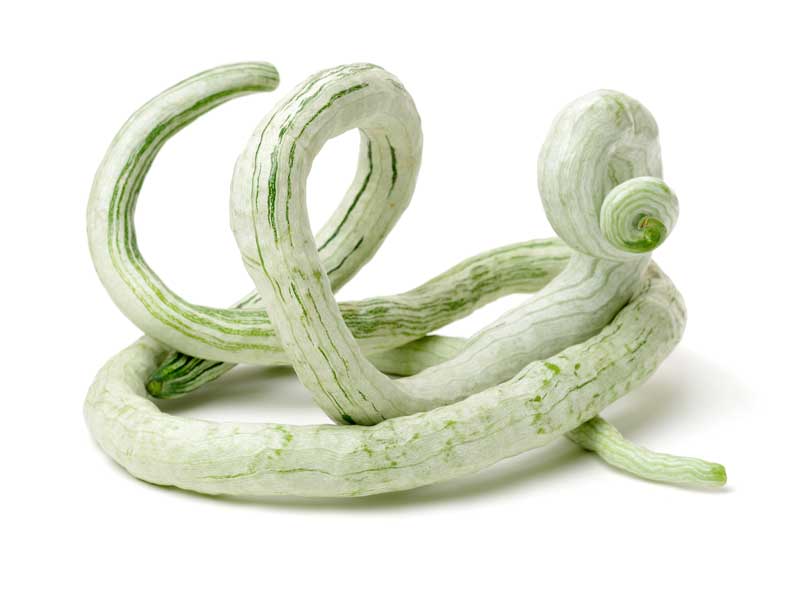Snake gourd is a unique, fast-growing Asian vegetable known for its long, curled shape and crisp flesh. Common in Indian and Southeast Asian kitchens, it grows well in warm Australian climates when given room to climb. This vine is ideal for backyard veggie patches or urban trellised gardens.
What Is Snake Gourd?
Botanical Name: Trichosanthes cucumerina
Also Known As: padwal (Hindi), pudalangai (Tamil), chichinga (Bengali), serpent gourd
Snake gourd belongs to the cucurbit family and is prized for its slender, tender fruits that resemble snakes when hanging. It’s typically harvested young for cooking, though mature fruits can be left to ripen for seed saving. The vine produces white, frilly flowers and grows best on strong vertical supports.
Quick Growing Info
| Category | Details |
|---|---|
| Plant Type | Annual climbing vine |
| Botanical Name | Trichosanthes cucumerina |
| Climate Zones | Tropical, Subtropical, Warm Temperate |
| Sowing Season | Spring to early summer (after frost) |
| Days to Harvest | 60–90 days |
| Spacing | 60 cm apart |
| Sunlight | Full sun |
| Soil pH | 6.0–7.0, rich and well-draining |
| Support Needed | Yes – strong vertical trellis or arch |
How to Grow Snake Gourd from Seed
Soak seeds overnight to speed up germination. Plant directly into warm soil or start in seed trays if your climate has a short warm season. Transplant when seedlings have at least 2 true leaves and temperatures are consistently above 20°C.
Provide a strong trellis or pergola to support heavy vines and keep fruit straight. Water regularly, especially during flowering and fruit development. Mulch well to retain soil moisture and reduce weeds.
Pollination
Snake gourd has separate male and female flowers. Insects usually pollinate them, but you can hand-pollinate early in the morning with a soft brush if fruit isn’t setting.
Common Problems and Fixes
| Problem | Cause | What to Do |
|---|---|---|
| No fruit forming | Poor pollination | Hand-pollinate flowers or attract more bees |
| Curled, yellowing leaves | Aphid or whitefly damage | Spray with neem oil or insecticidal soap |
| Fruit rot at base | Contact with wet soil | Grow vertically and mulch under plants |

When and How to Harvest
Harvest snake gourds when they’re young, around 30–45 cm long, smooth and green. If left too long, they become fibrous and bitter. Pick every 2–3 days during peak fruiting season.
Cut the fruit with a small portion of the stem using garden scissors or secateurs. Store in the fridge and use within 5–7 days.
How to Use Snake Gourd in the Kitchen
Snake gourd has a mild, cucumber-like taste that takes on flavours of spices and herbs. Popular dishes include:
- Stuffed Snake Gourd: Slice and hollow out the middle. Fill with spiced lentils or mince and steam or bake.
- Snake Gourd Stir-Fry: Cut into thin rings and fry with onion, garlic, turmeric and coconut.
- Snake Gourd Soup: Simmer with tomato, ginger, and a dash of lime for a simple healing broth.
Further Reading and References
Next in the Series
This article is part of our Asian Edible Gourd Series. Read more:

